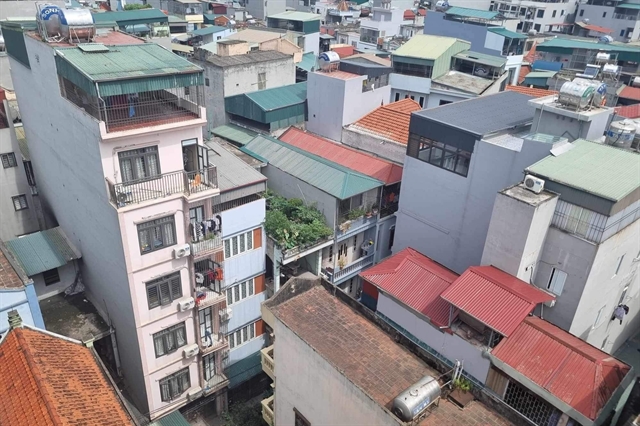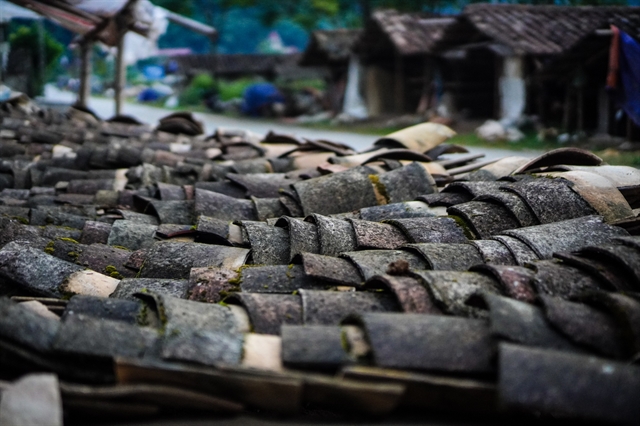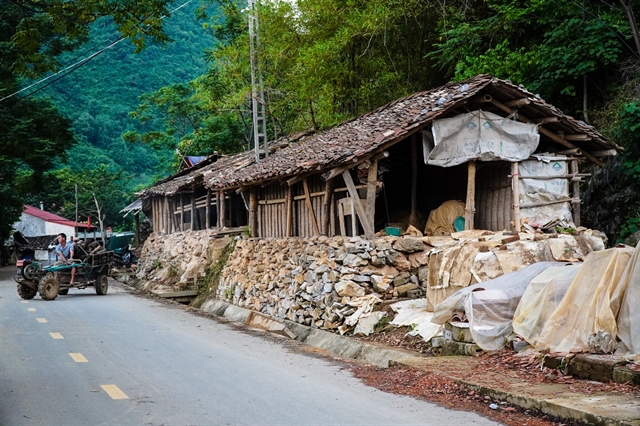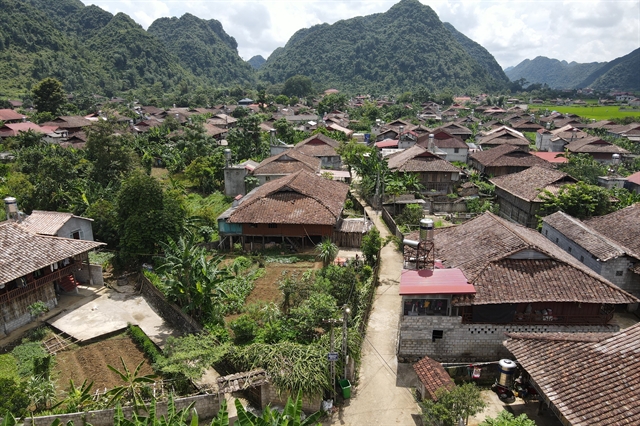 Features
Features

Quỳnh Sơn Village in Bắc Sơn District of the northern province of Lạng Sơn is not only famous for its historical sites but also for making "double tiles".

|
| Double tiles are often used to roof houses on stilts by people in Bắc Sơn and neighbouring districts . — Photo dantri.com.vn |
By Thu Hằng
Quỳnh Sơn Village in Bắc Sơn District of the northern province of Lạng Sơn is not only famous for its historical sites but also for making "double tiles".
Experiencing many ups and downs, the tile-making craft seems to be dying out due to the appearance of new types of tiles. However, the traditional profession in Quỳnh Sơn still exists and is being preserved and developed.
The two sides of the road throughout the village are full of simple tents. Inside the tents are rows of rough double tiles that are neatly arranged, waiting for baking. Nearby are simple and traditional tile kilns slowly releasing smoke.
Quỳnh Sơn is the only place in Lạng Sơn that still preserves the craft of making double tiles.
Hoàng Công Ngọc, 83, Quỳnh Sơn Commune, said that the craft was introduced to the village in the late 19th century.

|
| Double tiles are baked in the kiln for 10 days. Photo qdnd.vn |
At that time, a man called Lý Khoát invited two workers from neighbouring Cao Bằng Province to the village to make tiles. Fortunately, the land in the area adjacent to the two communes of Long Đống and Quỳnh Sơn had clay that was suitable for the requirements of the craft.
To promote the profession, artisans brought the art of tile-making to various provincial districts. They also went to China to study and afterwards invented the typical double tiles of Quỳnh Sơn.
“From when I was born I used clay as a toy. Adults often let children like us play on the ground because, at that time, there were not many toys. Our first game was making double tiles. By the age of 15, I was able to do the main steps,” said Ngọc.
“Traditional tile-making craft was like destiny for us. It is not only for a living but has become an emotional act that is hard to stop.
“They are called 'double tiles' because of the way they lay on the roof; there must be one upside down and one upturned tile. Now, most of the ethnic Tày people still live in houses on stilts that use double tiles because they are light, airtight, and do not leak under rains. They are cool in the summer and warm in the winter.”

|
| Quỳnh Sơn is the only place in Lạng Sơn that still preserves the craft of making traditional double tiles. — Photo dantri.com.vn |
Dương Văn Hồng, who lives in Nà Riềng 2 Village, said: “We are very proud of our traditional craft. Over hundreds of years, Quỳnh Sơn tiles are still loved because of the quality that comes from the secrets handed down by our forefathers.”
In the village, there are more than 50 households producing double tiles. Each household can earn about VNĐ80 – 100 million per year. This type of tile is often used in Bắc Sơn District and neighbouring districts such as Bình Gia, Văn Quan, Văn Lãng and some provinces such as Hòa Bình, Thái Nguyên, Sơn La and Lào Cai.
To make good tiles, the first step is to choose the clay. Quỳnh Sơn’s clay has an ash or yellow-brown colour. After kneading well, it has a high degree of smoothness, flexibility and toughness.
The clay is then thoroughly kneaded again with water to remove impurities. Villagers cut the clay into bars and knead it again. They use their feet to tread on it carefully to form a rectangular box. After that, they cut the clay into thin slices with a thickness of about 1cm and then bring the piece into a wooden mould.
It takes 30-50 days to sun-dry the tiles and then they are baked in the kiln. The kiln is burned by wood and the firing process takes place continuously for 10 days.
To colour the tiles, each kiln has a different secret to creating durability and the right effect.
A kiln can bake about 10,000 tiles, enough for roofing a three-room house.

|
| Most of the houses on stilts of the ethnic Tày people in Quỳnh Sơn Village are roofed with double tiles. — Photo nhadatexpress.vn |
Quỳnh Sơn has also established vocational training classes for young people to maintain the craft. However, the village also faces difficulties as the clay needed for making tiles has gradually become rare.
Dương Hồng Hạnh, deputy head of the Information and Culture Department of Bắc Sơn District, said that the locality had projects to promote and preserve the traditional craft village.
“Going forward we will continue to promote the role and meaning of the houses on stilts roofed with double tiles. Along with that, we will advise Bắc Sơn District People's Committee to coordinate with the External Relation Office to develop a project to preserve and promote the traditional craft village. We also plan to develop experience-tourism in Quỳnh Sơn Village,” said Hạnh. VNS




